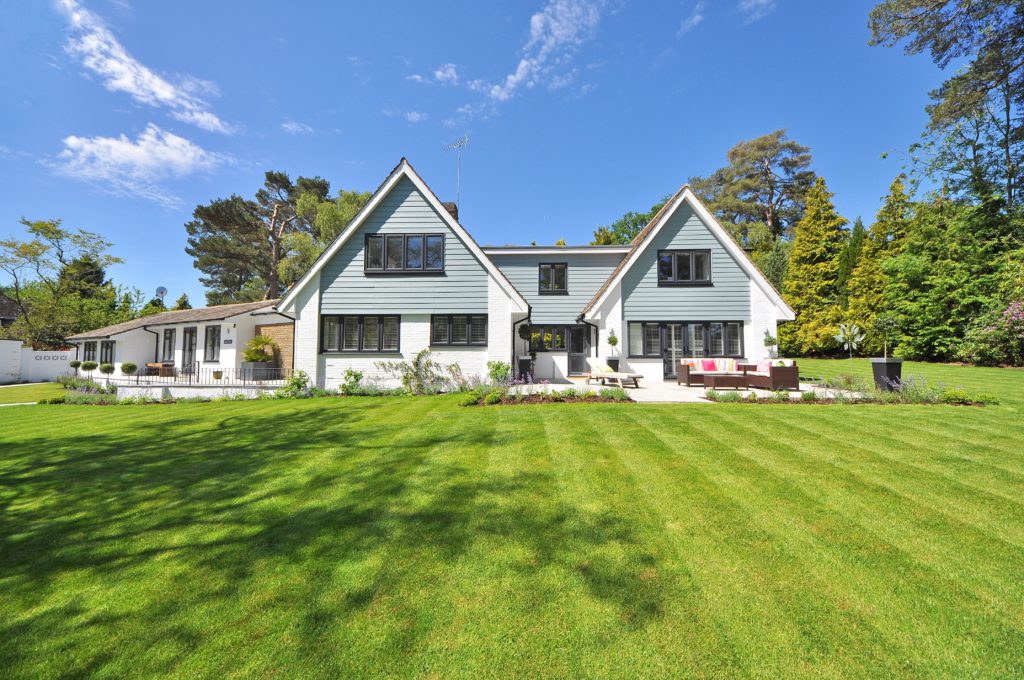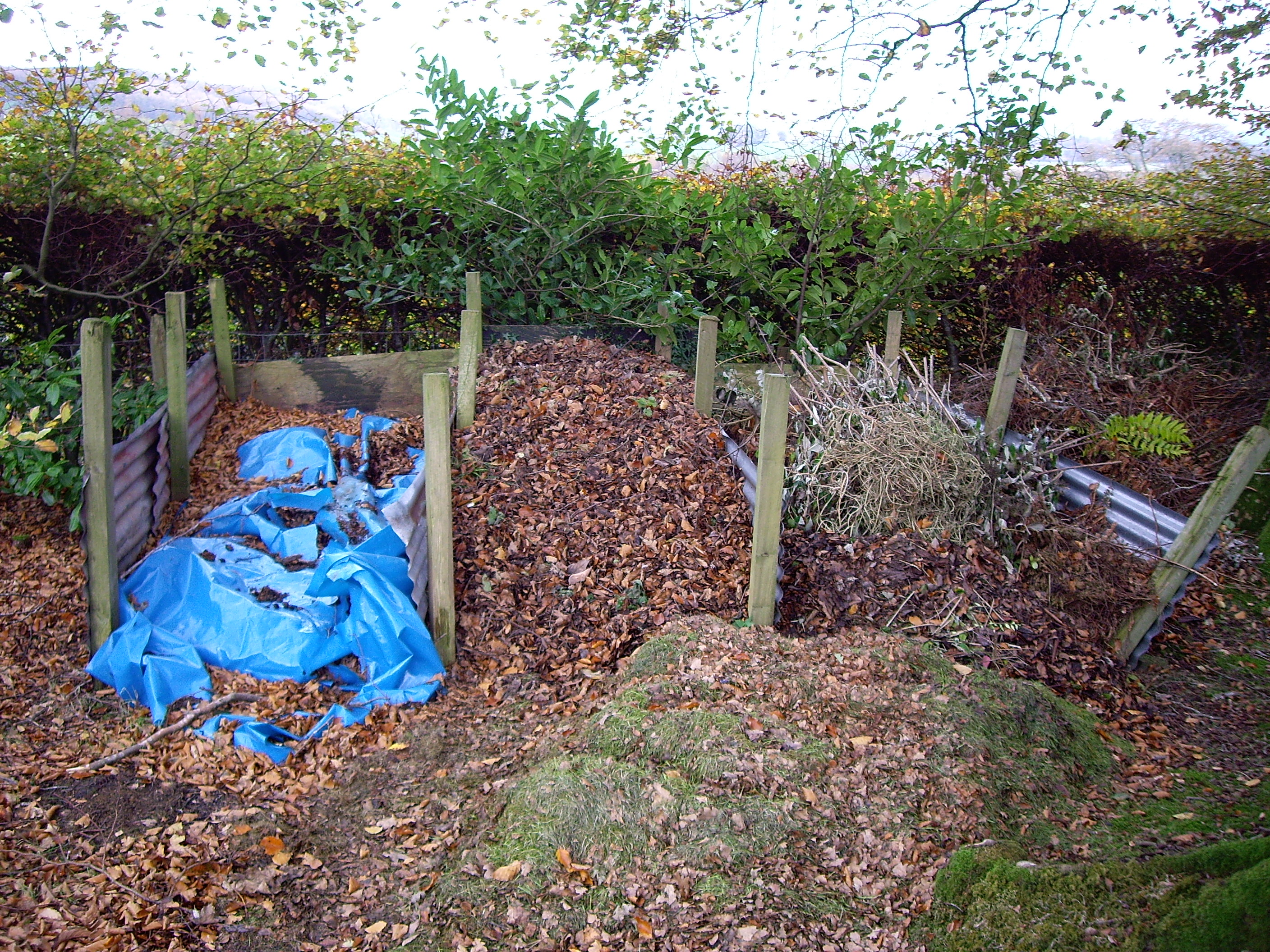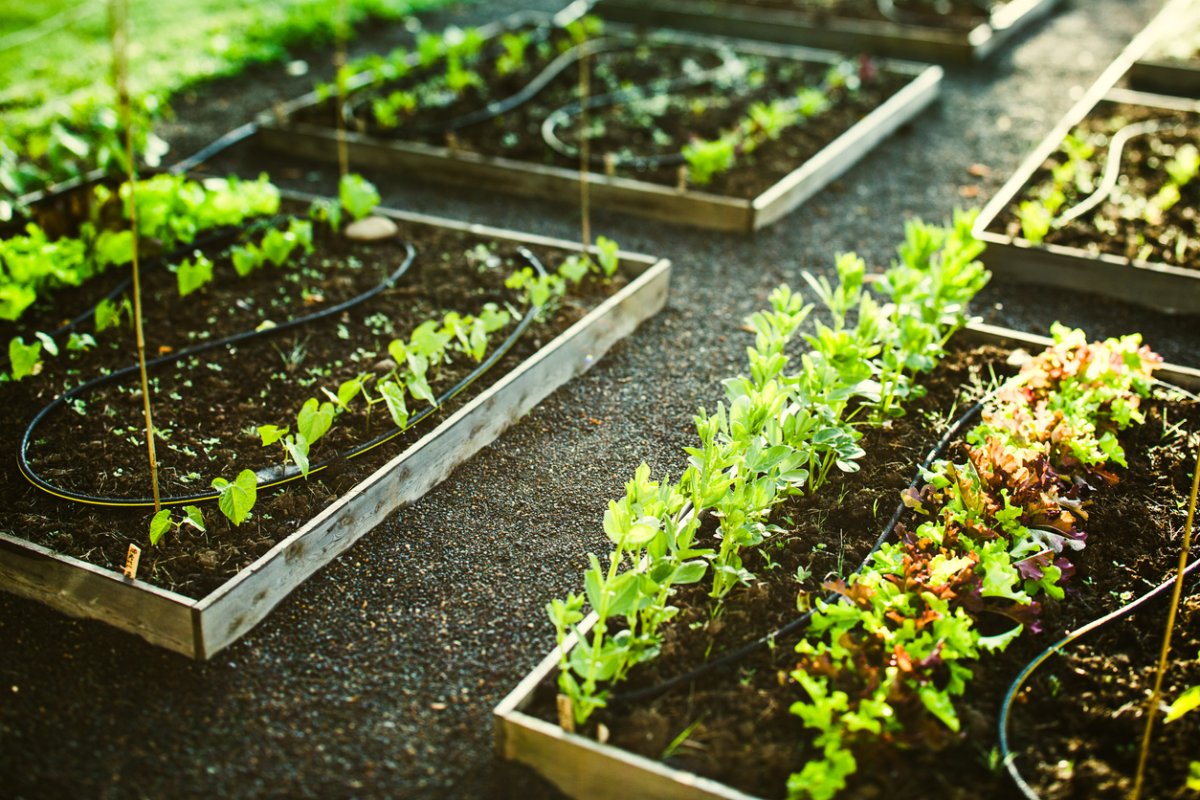Home>Garden Design>Planning Your Garden>How To Make An Estimate For Landscaping


Planning Your Garden
How To Make An Estimate For Landscaping
Modified: January 22, 2024
Learn the step-by-step process of planning your garden and creating an accurate estimate for landscaping your outdoor space. Transform your backyard into a beautiful oasis with our helpful tips and techniques.
(Many of the links in this article redirect to a specific reviewed product. Your purchase of these products through affiliate links helps to generate commission for Chicagolandgardening.com, at no extra cost. Learn more)
Table of Contents
Introduction
Welcome to the world of gardening! Planning your garden is an exciting endeavor that allows you to create an outdoor space perfectly tailored to your preferences and needs. Whether you’re a beginner or a seasoned gardener, having a well-thought-out plan is essential to maximize the beauty and functionality of your garden.
This article will guide you through the process of planning your garden, covering everything from assessing the project to finalizing the estimate. By following these steps, you’ll be able to create a garden that brings joy and tranquility to your everyday life.
Gardening is more than just a hobby; it’s a form of self-expression and a way to connect with nature. A well-designed garden can enhance the curb appeal of your home, provide a relaxing retreat, and even grow your own fresh produce. Before diving into the exciting world of plants and flowers, it’s important to lay the groundwork for your garden plan.
Planning your garden involves careful consideration of various factors, including the size and layout of your space, the climate and soil conditions, your personal style and preferences, and the resources available to you. By taking the time to evaluate these elements, you’ll be able to create a garden that is not only aesthetically pleasing but also functional and sustainable.
Throughout this article, we’ll provide you with practical tips and guidelines to help you create a garden plan that suits your unique needs and desires. From measuring the area and calculating materials to determining labor costs and including additional expenses, we’ll cover all the essential steps to facilitate the planning process.
So, grab a notepad and pen, put on your gardening gloves, and let’s get started on planning the garden of your dreams!
Step 1: Assess the Project
Before you start digging in the dirt, it’s essential to assess the project and have a clear understanding of what you want to achieve with your garden. This step involves taking a closer look at your space, considering your goals and priorities, and identifying any challenges or opportunities that may arise.
Begin by evaluating the size and layout of your garden area. Take measurements and sketch a simple diagram to visualize the space. This will help you determine how much area you have to work with and what features you can incorporate, such as a patio, walkways, or flower beds.
Next, consider your goals for the garden. Are you looking to create a serene retreat, a vibrant flower garden, or a functional space for entertaining? Knowing your objectives will guide your decision-making process as you move forward with the planning.
Take into account the existing elements of your garden, such as trees, shrubs, and structures. Determine if any of these elements need to be removed or if they can be incorporated into the new design. Consider the amount of sunlight your garden receives throughout the day, as this will affect plant selection and placement.
Additionally, think about the maintenance level you’re comfortable with. Are you looking for a low-maintenance garden or are you willing to invest time and effort into upkeep? Understanding your maintenance preferences will help you choose the right plants and design elements that align with your lifestyle.
Identify any challenges or opportunities specific to your garden. This could include factors such as poor soil quality, drainage issues, or a high-traffic area. Assessing these challenges will allow you to plan accordingly and find suitable solutions.
Finally, consider your budget for the project. Understanding your financial limitations will help you make informed decisions about what elements to include and what materials to prioritize.
By thoroughly assessing the project, you’ll have a solid foundation for the rest of the planning process. Understanding the size, layout, goals, existing elements, maintenance preferences, challenges, opportunities, and budget of your garden will inform your decision-making as you move forward with creating a plan that suits your needs and desires.
Step 2: Measure the Area
Once you have assessed the overall project, it’s time to get down to the nitty-gritty details by measuring the area of your garden. Accurate measurements are crucial for determining the quantity of materials needed and ensuring that everything fits harmoniously within the space.
Begin by taking a measuring tape and carefully measure the length and width of your garden area. If you have irregularly shaped spaces, break them down into smaller sections and measure each section separately. Note down these measurements on your sketch or use a gardening app or software to keep track of them.
Next, consider any specific features or structures within your garden. Measure the dimensions of existing structures, such as patios, decks, or paved areas, as well as any existing flower beds, borders, or raised beds. It’s important to include these measurements in your plan to ensure accurate placement of new features.
Don’t forget to measure the height and width of doors, gates, and pathways leading into the garden. This is particularly important if you plan to bring in heavy equipment or larger plants that need to navigate through tight spaces.
When measuring, it’s essential to account for any slopes or uneven terrain. Measure the highest and lowest points to determine the grade and slope of your garden. This information will come in handy when considering drainage and irrigation solutions.
Consider marking out the measurements on the ground using stakes or string to give yourself a visual representation of the garden area. This will help you better visualize how different elements will fit together and assist you in making informed decisions during the planning process.
Lastly, consider taking photographs of the garden area from different angles. These photos can serve as references when you’re not physically present in the garden, and they can also be useful for sharing your vision with professionals or seeking advice from knowledgeable individuals.
By taking accurate measurements of your garden area, structures, and features, you’ll be able to create a detailed plan that ensures everything fits seamlessly within the space. Remember to be precise and meticulous during this step, as it will set the groundwork for the rest of your garden planning process.
Step 3: Calculate Materials Needed
Once you have measured the area of your garden, it’s time to calculate the materials you’ll need to bring your garden plan to life. This step is crucial for budgeting and ensuring you have all the necessary resources to complete your project.
Start by considering the various materials you’ll need based on your garden design. This can include items such as soil, mulch, plants, seeds, gravel, stones, pavers, and any other hardscape materials. Take into account the specific requirements of your design, such as the depth of soil needed for flower beds or the square footage of an area to be paved.
For soil and mulch, calculate the volume needed by multiplying the length, width, and height of the specific areas. Consider the desired depth of soil or mulch and adjust your calculations accordingly. Be sure to account for any slopes or uneven terrain that may require additional materials.
When it comes to plants, consider the variety and quantity you’ll need to achieve your desired garden design. Research the recommended spacing between plants and calculate the number of plants needed based on the size of your garden bed or space. Account for any existing plants that you plan on keeping and adjust your calculations accordingly.
For hardscape materials, such as stones or pavers, calculate the square footage needed based on the measurements of the areas where they will be installed. Consider any patterns or designs you have in mind and accommodate for any waste or cuts that may be necessary.
Don’t forget to include additional materials such as fertilizer, compost, weed barriers, or edging materials if needed. These smaller details can often be overlooked but are essential for the overall success of your garden.
Once you have calculated the materials needed, make a detailed list and research prices from local suppliers or nurseries. This will give you an estimate of the overall cost and help you stay within your budget.
Keep in mind that it’s always a good idea to overestimate the quantity of materials needed slightly to account for any unforeseen issues or changes in your design. It’s better to have a few extra materials on hand than to run out in the middle of your project.
By accurately calculating the materials needed for your garden, you’ll be prepared with everything required to bring your garden plan to fruition. This meticulous planning will save you time, money, and frustration as you move forward with implementing your design.
Step 4: Determine Labor Costs
Once you have assessed the project, measured the area, and calculated the materials needed, it’s time to consider the labor costs involved in bringing your garden plan to life. Labor costs can vary depending on the complexity of the project, the time required, and the expertise needed. Taking the time to determine these costs will help you create a realistic budget for your garden.
If you plan on doing the labor yourself, consider the amount of time and effort you’re willing to invest in the project. Be honest with yourself about your skill level and the amount of free time you have available. Keep in mind that certain tasks, such as digging trenches or installing complex irrigation systems, may require specialized knowledge or equipment.
If you’re hiring professionals for specific tasks or the entire project, start by researching local landscapers, gardeners, or contractors. Get multiple quotes to compare prices and services offered. Look for professionals with experience in projects similar to yours and ask for references or portfolios of their previous work.
When discussing labor costs with professionals, be clear about your expectations and provide them with any relevant details about your garden design. This will help them provide an accurate estimate based on the specific tasks and time involved.
Some labor costs to consider include clearing and preparing the area, soil preparation, planting or laying out hardscape materials, and any additional tasks such as installing irrigation systems or constructing structures like pergolas or fences.
Keep in mind that labor costs can vary depending on factors such as location, seasonality, and the availability of skilled workers. It’s important to factor in these variables when budgeting for your garden project.
If you’re working with a limited budget, consider breaking down the project into phases and completing some of the labor-intensive tasks yourself, while hiring professionals for more complex or time-consuming tasks. This can help reduce costs while still ensuring the quality and efficiency of your garden installation.
By determining labor costs ahead of time, you’ll have a better understanding of the financial commitment required to bring your garden plan to fruition. Whether you decide to tackle the labor yourself or hire professionals, establishing a budget for labor costs will help you stay on track and ensure a successful and timely completion of your garden project.
Step 5: Include Equipment Expenses
When planning your garden project, it’s important to consider the equipment needed to complete the tasks at hand. Whether you’re doing the work yourself or hiring professionals, having the right tools and equipment is essential for a smooth and efficient process. By including equipment expenses in your budget, you can ensure that you have everything necessary to bring your garden plan to life.
Start by making a list of the tools and equipment needed for your project. This can include basic hand tools such as shovels, rakes, and pruning shears, as well as larger equipment like a wheelbarrow, a tiller, or a lawn mower. Consider the specific tasks you’ll be undertaking and research the recommended tools needed for each.
If you already have some of the necessary tools, assess their condition and determine if any need to be replaced or repaired. This will help you prioritize your equipment expenses and ensure that you have reliable tools for the job.
If you don’t own certain equipment and you’re planning to do the work yourself, you have a few options. You can explore the possibility of borrowing or renting the equipment from a friend, neighbor, or local rental shop. This can be a cost-effective solution, especially for specialized equipment that you may not use frequently.
Another option is to purchase the equipment outright. In this case, it’s important to compare prices from different suppliers and consider the quality and durability of the equipment. Investing in good quality tools may be more expensive upfront but can save you money in the long run by lasting longer and performing better.
If you’re hiring professionals for your project, discuss with them what equipment they will be providing and what equipment you’re expected to provide. Some professionals may have their own tools and equipment, while others may require you to provide certain items. Clarifying equipment responsibilities will help avoid any misunderstandings or additional expenses.
Don’t forget to budget for any additional expenses related to equipment, such as fuel, maintenance, or repairs. Regular maintenance of tools and equipment is crucial for their longevity and performance.
By including equipment expenses in your garden plan, you’ll be prepared with all the necessary tools and equipment to successfully complete your project. Whether you’re purchasing or renting, having the right equipment will make the process easier and more efficient, resulting in a well-executed garden design.
Step 6: Consider Additional Costs
When planning your garden project, it’s important to consider any additional costs that may arise beyond the main expenses of materials, labor, and equipment. These additional costs can vary depending on the specific circumstances of your project and should be taken into account to ensure that you have a realistic budget in place.
One common additional cost to consider is permits or building fees. Depending on your location and the nature of your project, you may need to obtain permits or pay fees to comply with local regulations. Research the requirements in your area and factor in any associated costs when estimating your budget.
Another additional cost to consider is the need for professional advice or consultations. If you’re unsure about certain aspects of your project or need guidance from experts, you may incur costs for consulting with landscape designers, architects, or horticulturists. While this may add to your expenses, their expertise can be invaluable in ensuring a successful and well-designed garden.
Don’t forget to budget for ongoing maintenance costs as well. This can include expenses associated with watering systems, fertilizers, pest control, and regular upkeep of the garden. Maintaining a healthy and vibrant garden requires ongoing care, so it’s important to include these costs in your budget to ensure the long-term success of your project.
You may also encounter unexpected costs during the implementation of your garden plan. These can include unforeseen issues during construction or the need for additional materials due to design changes or adjustments. It’s always a good idea to have a contingency fund set aside to account for these unexpected expenses.
Consider any future plans or expansion possibilities for your garden. If you anticipate making additions or modifications in the future, it might be worthwhile to invest in infrastructure or design elements that can accommodate these changes. While it may mean a higher upfront cost, it can save you money in the long run by avoiding the need for major transformations down the line.
Lastly, think about the longevity and value-added aspect of your garden project. Investing in high-quality and durable materials, as well as professional installation, can increase the value of your property and save you money on future maintenance or repairs.
By considering these additional costs upfront, you’ll have a more realistic and comprehensive budget for your garden project. Being prepared for potential expenses will help you avoid any financial surprises and ensure a smoother implementation of your garden plan.
Step 7: Account for Profit Margin
When estimating costs for your garden project, it’s important to account for a profit margin, especially if you’re planning to hire professionals or if you’re undertaking the project for commercial purposes. A profit margin ensures that you have enough funds to cover all expenses and generate a reasonable return on investment.
If you’re hiring professionals, it’s important to understand that they are running a business and need to make a profit. The cost estimate they provide will likely include their labor costs, overhead expenses, and a margin for profit. This profit margin allows them to sustain their business, improve their services, and invest in their expertise.
If you’re doing the work yourself, it’s still important to consider a profit margin for your efforts. Your time and expertise are valuable, and assigning a value to them ensures that you’re adequately compensated for your hard work.
When determining your profit margin, consider factors such as the complexity of the project, your level of experience, the expertise and services you’re providing, and the market rates in your area. Researching the prices charged by similar professionals or comparing your project to similar projects in your region can give you an idea of what a reasonable profit margin would be.
Keep in mind that a profit margin should be reasonable and fair. It should reflect the value and quality of the work or services provided without overcharging clients or customers. Balance your desire for profit with the need to remain competitive and provide value for money.
In addition to factoring in a profit margin, consider the overall market conditions and your target audience when determining your pricing. Understanding the demand for your services, the prices charged by competitors, and the expectations of your target market will help you set a competitive yet profitable rate.
By accounting for a profit margin, you ensure that you have a realistic budget that covers all expenses and allows for a reasonable return on investment. This profitability allows you to maintain the quality of your work, continue providing excellent service, and grow your business or personal gardening endeavors.
Step 8: Finalize the Estimate
After considering all the necessary factors, it’s time to finalize your estimate for the garden project. By this stage, you have assessed the project, measured the area, calculated materials and labor costs, included equipment expenses, considered additional costs, and accounted for a profit margin. Finalizing the estimate involves reviewing and fine-tuning the details to ensure that your budget is accurate and comprehensive.
Begin by reviewing each component of your estimate, including materials, labor, equipment, and additional costs. Double-check your calculations and make sure you haven’t overlooked anything. It’s important to be as thorough as possible to avoid any unexpected financial surprises.
Consider seeking a second opinion if necessary. This can be from a knowledgeable friend, a gardening expert, or even a professional contractor. Getting an outside perspective can help identify any potential gaps or errors in your estimate.
If your estimate exceeds your budget, you may need to reassess your plans and make adjustments accordingly. This could involve scaling down certain aspects of the project, opting for more cost-effective materials, or exploring alternative solutions that align with your financial constraints. Remember that sometimes compromises need to be made, but it doesn’t mean sacrificing the overall beauty and functionality of your garden.
Once you’re satisfied with your estimate, create a comprehensive document that outlines all the costs involved. Organize the information in a clear and easily understandable format, and consider breaking it down into categories for easy reference.
Keep in mind that estimates can act as a guideline, and actual costs may vary. Market fluctuations, unexpected issues, or design changes can impact the final cost of the project. It’s crucial to have some flexibility in your budget to accommodate these variables.
Lastly, remember that the estimate is not set in stone. As you progress with your garden project, you may encounter new ideas, challenges, or opportunities. It’s important to remain adaptable and open to adjustments along the way, while still maintaining a reasonable control over your expenses.
By finalizing your estimate, you gain a clear understanding of the financial commitment and can plan accordingly. This comprehensive budget will serve as a guide for the successful execution of your garden project, ensuring that you have the necessary resources and keeping you on track throughout the process.
Conclusion
Planning your garden is an exciting and rewarding endeavor that allows you to create a beautiful and functional outdoor space. By following the step-by-step process outlined in this article, you can ensure that your garden project is well thought out and executed to perfection.
Assessing the project, measuring the area, calculating materials and labor costs, including equipment expenses, considering additional costs, accounting for a profit margin, and finalizing the estimate are all crucial steps in the planning process. This comprehensive approach ensures that you have a realistic budget, a clear understanding of the resources needed, and a solid foundation for implementing your garden plan.
Throughout the planning process, remember to stay open to adjustments and be flexible. Gardening is a creative and organic activity, and sometimes changes need to be made based on new ideas or unforeseen circumstances. Embrace the opportunity to adapt your plan while still maintaining control over your expenses.
Moreover, don’t forget to infuse your personal style and preferences into your garden design. The true beauty of a garden lies in the unique touches that reflect your personality and create a space that brings you joy and tranquility.
Whether you’re a beginner or an experienced gardener, taking the time to plan your garden will pay off in the long run. A well-designed and carefully considered garden will provide years of enjoyment, relaxation, and beauty for you and your loved ones.
So, grab your pen, sketchpad, and gardening gloves, and embark on the journey of planning your dream garden. With the guidance provided in this article, you’ll have the knowledge and tools to create an enchanting outdoor space that becomes a sanctuary right in your own backyard.






